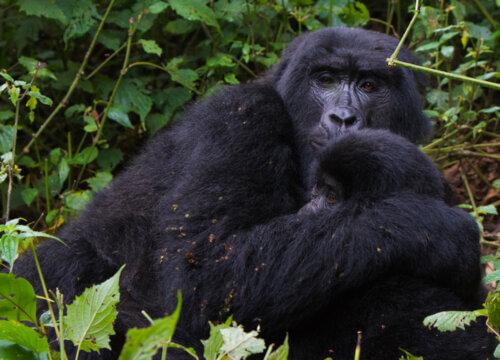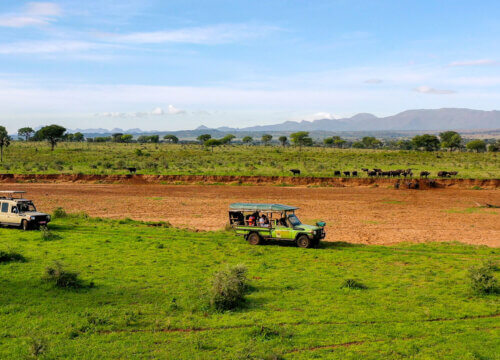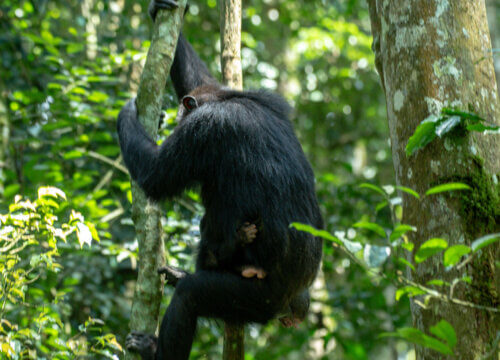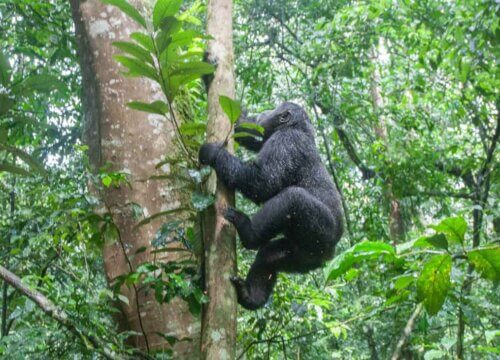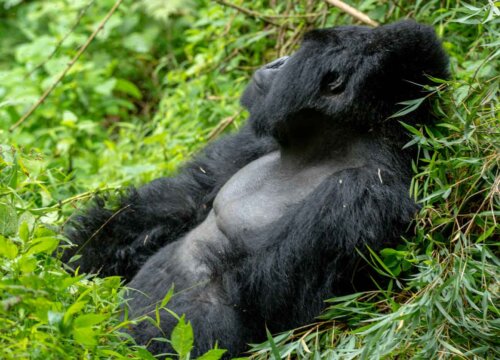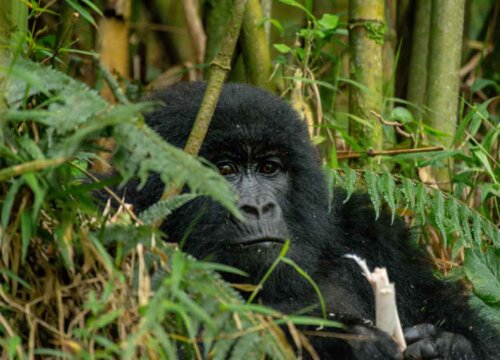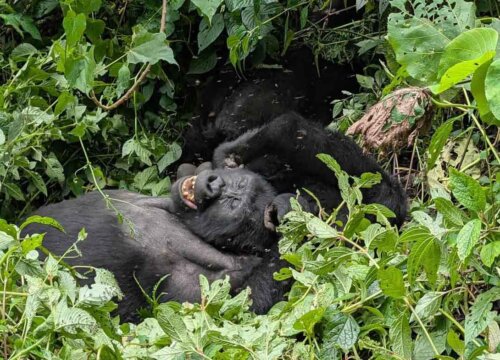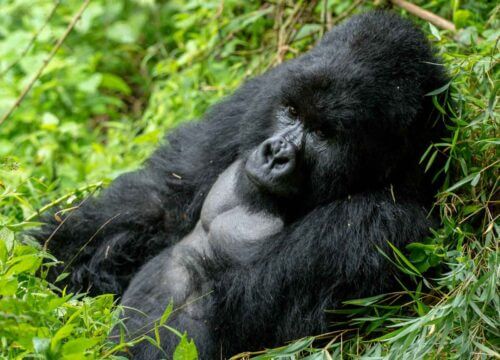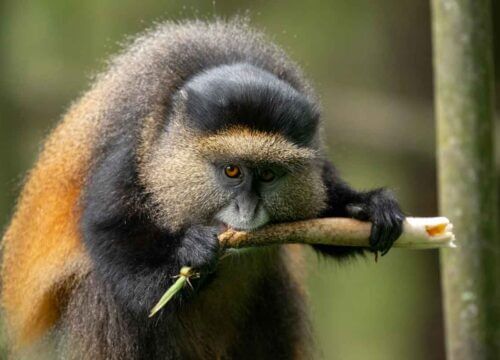What is Mountain Gorilla census
What is Mountain Gorilla census
Mountain Gorilla census is an organized effort to count and monitor the population of mountain gorillas, critically endangered species found in the forests of central Africa. Mountain gorillas live primarily in two regions that is the Virunga Mountain range which extends to parts of Rwanda, Uganda and the Democratic Republic of Congo plus Bwindi Impenetrable National Park in Uganda.
How is Mountain Gorilla census done
Mountain gorilla censuses are done through the following means;
Training field teams
Mountain gorilla censuses are carried out by teams of conservationists, researchers and park rangers. These efforts often take place in protected areas like Bwindi Impenetrable National Park in Uganda or Volcanoes National Park in Rwanda. Since mountain gorillas live in dense forests and rough terrain, the process requires extensive trekking through challenging landscapes.
Surveying forests
Instead of directly counting gorillas, researchers rely on indirect evidence like nests. Gorillas build new nests each night from leaves and branches, leaving behind clues about their presence. By carefully documenting and analyzing these nests, teams can estimate the number of gorilla individuals in an area.
DNA analysis for accuracy
To avoid double counting and improve accuracy, researchers collect fecal samples from the nests. These samples are then analyzed in laboratories to extract DNA which helps in identifying individual gorillas. This method is particularly useful for distinguishing between groups that may overlap in their ranges.
Mapping Gorilla groups
Field teams also track gorilla groups based on their movements, feeding habits and vocalizations. Detailed maps are created to document territories and avoid missing any groups during the census. The data collected is then cross referenced with DNA results for a complete overview.
Ensuring minimal disturbance
A key principle during the census is to minimize human impact on the gorillas and their home. Teams follow strict protocols to reduce stress on the animals and prevent the transmission of diseases such as wearing masks and maintaining a safe distance.
Collaboration across borders
Since mountain gorillas inhabit regions that span multiple countries, international cooperation is important. Organizations like the Greater Virunga Transboundary Collaboration work to coordinate efforts across borders ensuring consistency in data collection and analysis.
Once the census is complete, the data is used to assess population trends and inform conservation strategies. Positive findings like population increases highlight the success of conservation efforts like anti-poaching patrols and habitat protection.
Why is Mountain Gorilla census done?
Monitoring population trends
One of the primary reasons for conducting a mountain gorilla census is to monitor their population trends over time. By counting gorilla individuals and tracking changes in their numbers, scientists can determine whether their population is increasing, stable or declining. This information is essential for assessing the effectiveness of conservation efforts and adjusting strategies as needed. For example, a rise in population could indicate that anti-poaching measures and habitat protection initiatives are working while a decline might signal new or worsening threats that require immediate attention.
Assessing habitat health
Mountain gorillas are highly dependent on their natural habitats in the dense forests of the Virunga Mountains and Bwindi Impenetrable Forest. A mountain gorilla census not only counts gorillas but also provides insights into the state of their environment. Researchers can observe signs of habitat degradation such as deforestation or human encroachment which may impact gorilla survival. Healthy gorilla populations often reflect the overall health of their ecosystem which makes habitat assessment a vital component of mountain gorilla census.
Guiding conservation efforts
Conservation resources are often limited and it is important to allocate them effectively. The data collected during a mountain gorilla census helps conservationists prioritize areas and actions that need the most attention. For example, if a particular region shows a significant drop in gorilla numbers, efforts can be concentrated there to address specific threats like poaching or disease outbreaks. This targeted approach ensures that resources are used efficiently to maximize the impact of conservation initiatives.
Understanding social dynamics
Mountain gorillas live in family groups led by a dominant silverback male. A mountain gorilla census provides valuable information about the structure and dynamics of these groups including the number of males, females and infants. Understanding these social dynamics is crucial for predicting how populations might grow or change over time. For example, a healthy number of infants indicates successful reproduction while an imbalance in adult males and females could affect group stability and breeding potential.
Detecting threats
A mountain gorilla census usually reveals more than just population numbers. It can uncover developing threats to mountain gorillas. Poaching, illegal wildlife trade, human-wildlife conflict and diseases like respiratory infections are all significant risks. By identifying these threats early on, conservationists can take proactive measures to mitigate them. For instance, if snares or traps are found during a census, anti-poaching patrols can be intensified in that area to protect gorillas from being harmed.
Engaging local communities
Mountain gorilla censuses usually involve collaboration with local communities living near gorilla homes. This engagement helps raise awareness about the importance of protecting gorillas and fosters a sense of shared responsibility for their conservation. When communities see tangible results from census data like increased tourism revenue from growing gorilla populations, they are more likely to support conservation efforts and reduce activities that harm the species.
Global awareness and advocacy
The results of a mountain gorilla census play a crucial role in raising global awareness about the plight of these endangered animals. When people learn about the challenges gorillas face and the progress being made to protect them, they are more likely to support conservation initiatives through donations, advocacy or responsible tourism. The census serves as a powerful tool for inspiring action and ensuring that mountain gorillas remain a symbol of hope for wildlife conservation.
Where does Mountain Gorilla census take place?
Mountain gorilla censuses are conducted in the forested regions of Central and East Africa where gorillas are found. Specifically, the census takes place in the Virunga Mountain range and Bwindi Impenetrable National Park. The Virunga Mountain range extends to areas in Rwanda, Uganda and the Democratic Republic of Congo while Bwindi Impenetrable National Park is located in Uganda. These regions are famous for their dense forests, steep slopes and breathtaking biodiversity. Conducting a census in such challenging terrain is not easy but teams of researchers, conservationists and trackers work tirelessly to count the gorillas, often trekking for hours through thick vegetation. They rely on indirect signs like nests, dung and feeding remains as well as direct observations when possible.
How often is mountain gorilla census done?
Mountain gorilla census is done every after 5 to 10 years.
How long does Mountain Gorilla census take?
Conducting a mountain gorilla census is not a small task because Mountain gorillas are found in the dense forests of Central and East Africa, living in rugged and remote terrains which makes the process both challenging and time consuming. On average, a mountain gorilla census can take several months to complete often taking six months to more than a year. This depends on the number of gorillas being counted and the size of the survey area. The process involves multiple phases including training teams, extensive fieldwork and data analysis. Teams of researchers and trackers comb through the forests searching for gorilla nests, collecting fecal samples for genetic analysis and documenting sightings. Since gorillas are highly mobile and live in large areas, this requires repeated visits to ensure accuracy.
Data collection during Gorilla census
Data is gathered using a variety of methods like direct observation, camera traps, and analyzing gorilla nests. Researchers carefully note details such as group size, age structure and behavior which helps in providing insights into social dynamics and population trends. DNA samples from feces are also collected to identify individuals and monitor genetic diversity. This information is important for creating effective conservation strategies and ensuring the long-term survival of gorillas. By understanding their needs and challenges, we can work to protect their habitats and reduce threats like poaching or deforestation.
Challenges and limitations of Mountain Gorilla census
Difficult terrain and accessibility
Mountain gorillas live in remote and rough terrains usually at high altitudes and in dense forests. This makes accessing their habitats physically demanding and time consuming. Researchers must cross through steep slopes, thick vegetation and unpredictable weather conditions which can delay or hinder data collection efforts during mountain gorilla census.
Limited resources and funding for mountain gorilla census
Census operations require enough resources including trained personnel, equipment and logistical support. However, funding for such initiatives is usually limited due to competing conservation priorities. Without adequate financial support, it becomes challenging to carry out comprehensive surveys especially in large and hard to reach areas.
Risk of disease transmission to mountain gorillas
Human presence in gorilla habitats poses a risk of transmitting diseases to these primates because they are highly vulnerable to human illnesses. Researchers must follow strict protocols to minimize contact and avoid any potential outbreaks that could attack gorilla populations. This precaution can sometimes limit the scope of mountain gorilla census.
Behavioral challenges of gorillas during census
Mountain gorillas are naturally shy and elusive animals. They tend to avoid human interaction which makes it difficult to locate and observe them. Their ability to move long distances within their habitat also complicates efforts to count them accurately as they may cross into different territories during the gorilla census period.
Inconsistent data collection methods
Different gorilla census teams may use different methods to estimate gorilla populations for example direct observation, nest counts or genetic analysis of fecal samples. These inconsistencies can lead to inconsistencies in results and make it challenging to compare data across different studies or years.
Political Instability in gorilla habitats
Some mountain gorilla habitats are located in regions affected by political instability or conflict. This poses significant risks to researchers and can disrupt gorilla census activities. In some cases, entire areas may become inaccessible due to safety concerns leaving gaps in population data during mountain gorilla census.
Impact of climate change
Climate change is changing the ecosystems where mountain gorillas live. Shifts in weather patterns and vegetation could affect their movement and distribution making it harder to track their populations over time. Additionally, extreme weather events can delay or prevent fieldwork during the gorilla census.
Lack of local community involvement
While local communities play a crucial role in conservation efforts, they are sometimes underrepresented in mountain gorilla census activities. Without their involvement, it becomes harder to gain insights into gorilla movements or address threats like poaching. Engaging local communities is important for more effective and sustainable mountain gorilla census efforts.
Poaching and illegal activities
Despite conservation efforts, poaching remains a threat to mountain gorillas. Poachers may target these primates directly or accidentally harm them while hunting other wildlife. This not only reduces their population but also complicates mountain gorilla census efforts as researchers must account for such losses when estimating numbers.
Time intensive process
Conducting a mountain gorilla census is a time intensive work that requires months of planning, fieldwork and data analysis. The slow nature of this process means that by the time results are published, they may already be outdated especially if there are rapid changes in gorilla populations due to external factors.
For more information about mountain gorilla census, contact Giant Holiday Safaris.
Explorer More Safaris
- 14-Days Uganda Safari Gorilla Chimpanzees and Wildlife
- 12 Days Gorillas and Chimpanzees Wildlife Safari
- 10 days best of uganda primates & wildlife safari
- 6 Days Gorillas and Chimpanzee Trekking Safari
- 3 Day Bwindi Gorilla Trekking Safari
- 4 Day Uganda Gorilla Trekking and Wildlife Safari
- 4 Days Gorilla Trekking and Adventure Safari
- 5 Days Uganda Gorillas and Chimpanzee Tracking Safari
- 4-Day Rwanda Gorilla Trekking and Golden Monkey Tracking Safari
- 5 Day Gorilla Habituation and Chimp Trekking
- 4-Day Uganda & Rwanda Gorilla Trekking Tour
- 3 Days Bwindi Gorilla Trekking Ugnada from Rwanda
- 10 Days Uganda Primates and Game Safari

